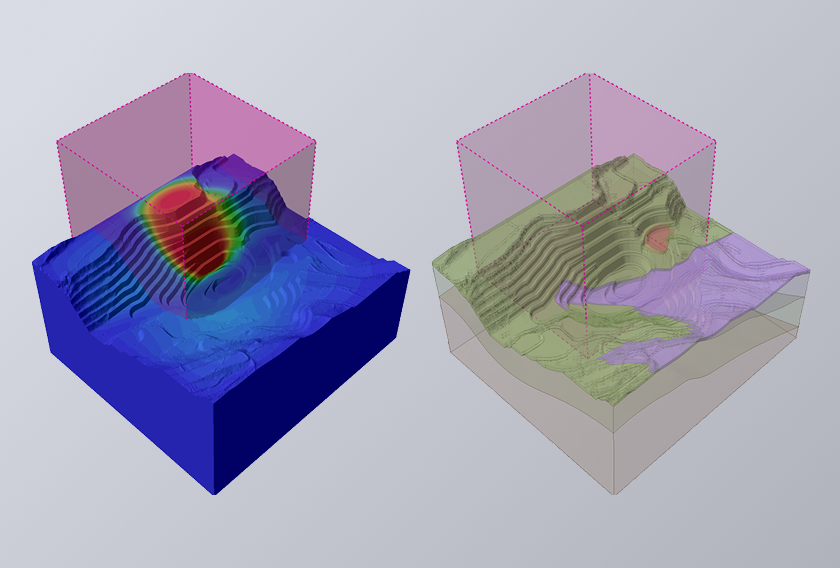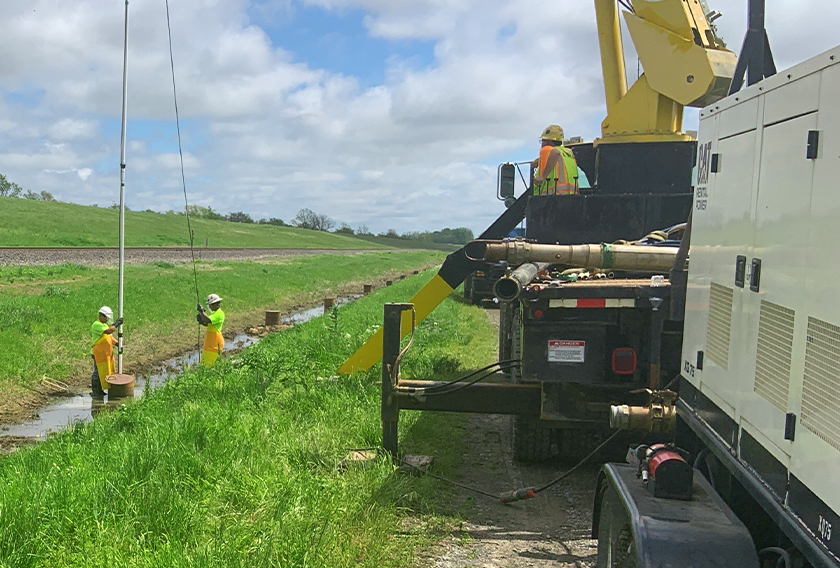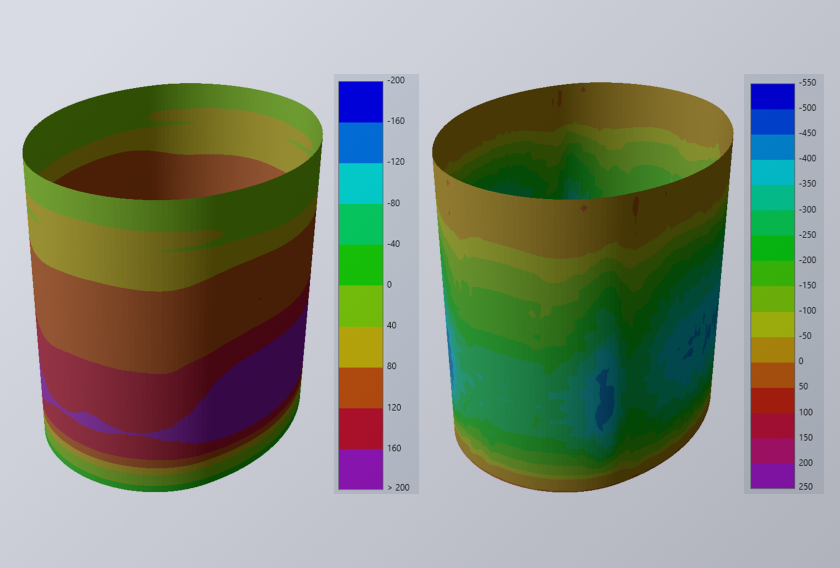How the New Solver Options in RS3 Deliver Significant Speed Gains
The latest update to RS3 introduces a major leap in simulation performance, delivering up to 18 times faster computation times, even on consumer-grade hardware. With this upgrade, Rocscience is making high-resolution, large-scale geotechnical modeling more accessible than ever before.
In geotechnical finite element analysis (FEA), solving the system of equations A·x = b is often the most computationally expensive part of the simulation. For large 3D models, this process can consume over 90% of the total runtime. Recognizing this computational bottleneck, the RS3 team at Rocscience is leveraging a new generation of matrix solvers that dramatically accelerate model performance on both CPU and GPU platforms, with notable speedups achievable on widely available, cost-effective hardware.
Why the Change?
Previous versions of RS3 relied on direct solvers or iterative methods with ILU/IC preconditioning. While stable for smaller problems, these methods struggled to scale on modern hardware, particularly for large, multi-material models. Performance profiling across both local and cloud-hosted environments consistently revealed the matrix solver as the dominant computational cost.
What’s New?
The updated RS3 matrix solver framework now includes a flexible, hardware-aware solver selection strategy:
- FGMRES with Smoothed AMG (CPU) – Parallelized with OpenMP for multi-core efficiency
- FGMRES with AMG (GPU) – Optimized for CUDA acceleration
- Direct GPU Solver – For NVIDIA GPU cards, ideal for small to medium models
Benchmark Highlights
Performance tests were conducted on two hardware platforms:
- HPC: AMD Ryzen 9 5950X (16 cores) + RTX 3090 (24 GB)
- Server: Dual Xeon Gold 5520 + NVIDIA A30 (24 GB)
Seven geotechnical models were analyzed using higher order 10-noded elements. These modes are picked from different applications such as bearing capacity, seepage analysis (Image 1), slope stability analysis, SSR, tunneling, and, with a different number of elements that are provided in the following table:
Case Number | Number of Elements |
Case 1 | 400, 000 |
Case 2 | 2,000,000 |
Case 3 | 2,000,000 |
Case 4 | 254,000 |
Case 5 | 300,000 |
Case 6 | 460,000 |
Case 7 | 212,000 |
Note: Since the models are non-linear, different numbers of iterations are required for each model to reach convergence. Therefore, the number of times the solver is used can vary between models.
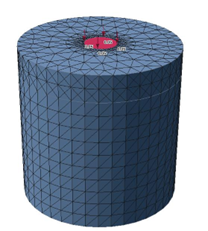
In the next section, we compare the total analysis time for each model by different solvers, and with different hardware. Additionally, the speed-up for an average iteration time is compared between the solver options.
Computation Time Comparison
Solver run-time across different models on HPC and Server platforms:
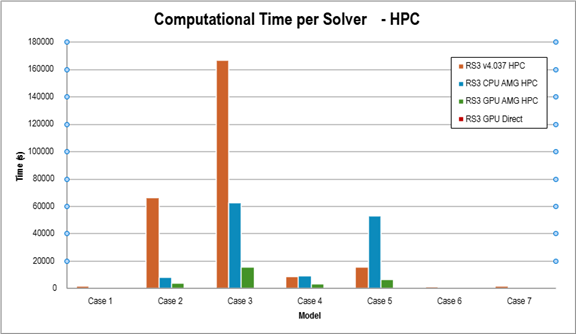
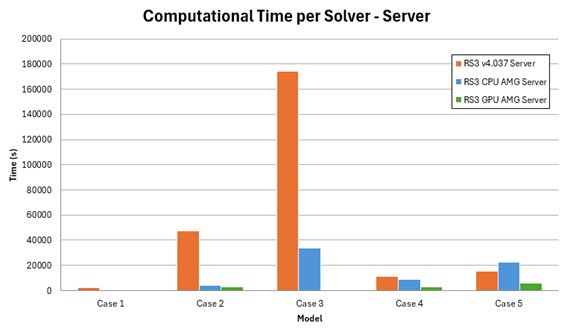
A summary of the whole computational time in a table:
Case Number | RS3 V4.037 | CPU AMG | GPU AMG | GPU Direct | ||||
HPC | Server | HPC | Server | HPC | Server | HPC | Server | |
Case 1 | 2,022 | 2,527 | 810 | 352 | 318 | 226 | -- | -- |
Case 2 | 66,162 | 47,557 | 8,102 | 4,137 | 3,735 | 2,906 | -- | -- |
Case 3 | 166,762 | 174,385 | 62,768 | 33,933 | 15,563 | --- | -- | -- |
Case 4 | 8,656 | 11,000 | 9,100 | 9,133 | 3,200 | 3,199 | -- | -- |
Case 5 | 15,395 | 15,592 | 53,108 | 22,252 | 6,615 | 5,650 | -- | -- |
Case 6 | 1,470 | -- | -- | -- | 261 | -- | 441 | -- |
Case 7 | 1,660 | -- | 758 | -- | 597 | -- | 685 | -- |
Note:
- Cases 6 and 7 were not run on the server due to smaller size.
- GPU Direct Solver was only applied to these two smaller models on the HPC computer. For the larger models, the available GPU memory was limited to store the matrix.Solver Speedup Compared to RS3 v4.037
Speedup ratios show performance gain with new matrix solvers:
Note: GPU direct was only on HPC and for small models
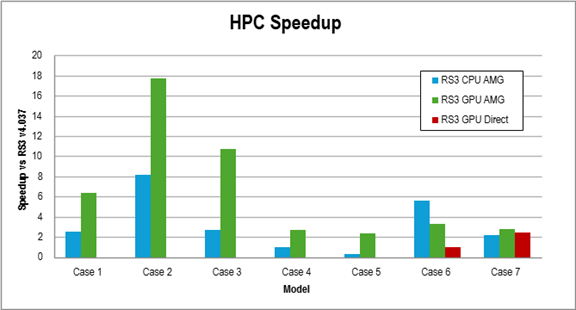
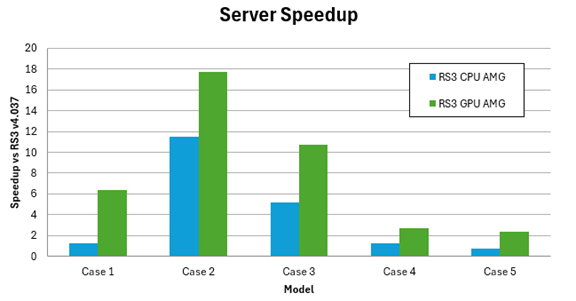
Conclusion
The enhanced matrix solver framework in RS3 marks a major leap forward in computational efficiency for geotechnical simulations:
- Up to 3× faster on small models with GPU Direct
- 12× faster with CPU AMG for large-scale analyses
- 18× faster using GPU AMG on 2M+ element simulations
What makes this especially compelling is accessibility – engineers can now achieve enterprise-grade performance with consumer hardware like an AMD Ryzen CPU and an NVIDIA RTX 3090 GPU, all for under $2,000. This democratizes advanced simulation, allowing engineering teams of any size to run high-resolution, large-scale models without relying on cloud platforms or expensive servers.
Experience Faster Simulations Today
Try the new RS3 and see the performance gains for yourself.
Download your free trial now.